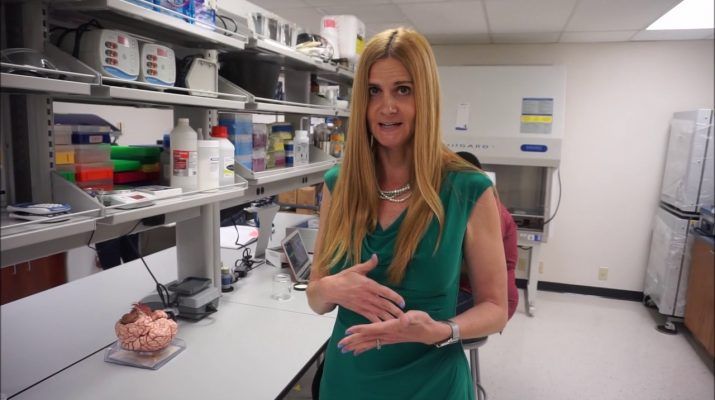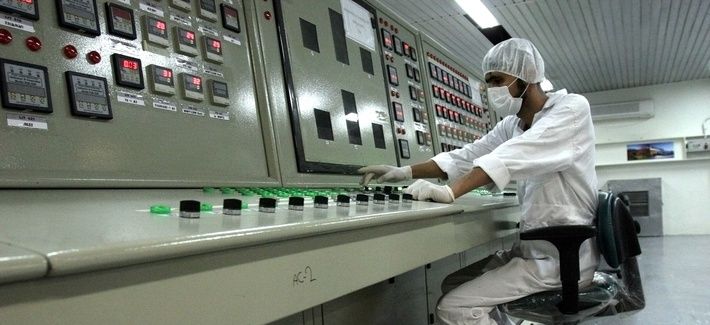Page 10144
A renewed campaign of covert network attacks is more likely to spur Tehran’s nuclear efforts than hinder them.
The Iran nuclear deal is increasingly at risk, with President Trump threatening to overrule his top national security advisers and defy the assessment of international monitors to declare Iran non-compliant with the agreement’s stipulations. The problem for the administration, however, is that no viable alternative is better than the Joint Comprehensive Plan of Action. If Trump rips up the JCPOA, the U.S. would forfeit the stringent limitations placed on Iran’s enrichment activities and the international community would lose the unprecedented transparency it now has on Iran’s nuclear program. Even more daunting, the United States would become isolated in its approach to Iran, opposed by Europe, Russia, China, and much of the rest of the world.
Perhaps a more realistic concern is the prospect that the administration will nominally uphold the deal, while engaging in aggressive covert action against Iran. Increasingly, when traditional military and diplomatic options appear too costly, states turn to cyber warfare. But a stepped-up cyber offensive against Iran is very unlikely to yield desirable results. Not only is it unlikely to be effective in its immediate objectives, but it risks antagonizing Iran into precisely the kinds of behavior the hawks want to forestall.
Continue reading “Cyberwar on Iran Won’t Work. Here’s Why” »
Aug 21, 2017
Paul Tudor Jones Wants to Crowdsource “Good” Companies — By Imogen Rose-Smith | Institutional Investor
Posted by Odette Bohr Dienel in categories: business, economics, ethics, finance
” … Paul Tudor Jones co-founded JUST Capital to fix the ills of corporate capitalism by identifying the most just or “good” companies. Will it work?”
Aug 21, 2017
Skills needed to fill U.S. plant job openings — By Dan Sewell and Christopher S. Rugaber | The Associated Press
Posted by Odette Bohr Dienel in category: employment
“It’s true that many jobs have gone overseas, to lower-wage workers.
But at the same time, American manufacturers have actually added nearly a million jobs in the past seven years. Labor statistics show nearly 390,000 such jobs open.”
Aug 21, 2017
UK scientists create world’s smallest surgical robot to start a hospital revolution — By Rachel Ellis | The Guardian
Posted by Odette Bohr Dienel in categories: health, robotics/AI
“British scientists have developed the world’s smallest surgical robot which could transform everyday operations for tens of thousands of patients.”
Aug 21, 2017
Stress and Brain: Jaime Tartar
Posted by Müslüm Yildiz in categories: health, neuroscience

Jaime Tartar tells us about how the brain interprets what is stressful, how it determines our behavioral and physiological response to stressors, and how it can be damaged by stress. She will discuss how the body’s reaction to acute stress has protective and adaptive effects in the short run while chronic stress can lead to poor health consequences such as decreased memory performance and depression.
Aug 21, 2017
False Positives in Senescent Cell Detection
Posted by Steve Hill in categories: biotech/medical, life extension
As your body ages, increasing amounts of your cells enter a state of cellular senescence. These cells no longer divide or support the tissues of which they are a part, and they emit a cocktail of harmful chemical signals that encourage other nearby cells to also enter the same senescent state.
The presence of senescent cells contributes to decreasing tissue function, increases chronic inflammation, and can even raise the risk of cancer and other age-related diseases.
Senescent cells normally destroy themselves via a programmed process called apoptosis and are removed by the immune system; however, the immune system declines with age, and increasing numbers of these senescent cells escape this disposal process and accumulate.
Aug 21, 2017
The Great Transhumanist Game — Part 1 — How to Win
Posted by Mark Larkento in categories: economics, geopolitics, transhumanism

This video was created by Gennady Stolyarov II, Chairman of the U.S. Transhumanist Party, as a piece in the Great Transhumanist Game orchestrated by Professor Angel Marchev, Sr., Ph.D., of the University of National and World Economy in Sofia, Bulgaria.
Continue reading “The Great Transhumanist Game — Part 1 — How to Win” »
Aug 21, 2017
The Great Transhumanist Game — Part 2 — How to Play and Not to Play
Posted by Mark Larkento in categories: economics, geopolitics, transhumanism

This is the second video created by Gennady Stolyarov II, Chairman of the U.S. Transhumanist Party, as a piece in the Great Transhumanist Game orchestrated by Professor Angel Marchev, Sr., Ph.D., of the University of National and World Economy in Sofia, Bulgaria.
Continue reading “The Great Transhumanist Game — Part 2 — How to Play and Not to Play” »















